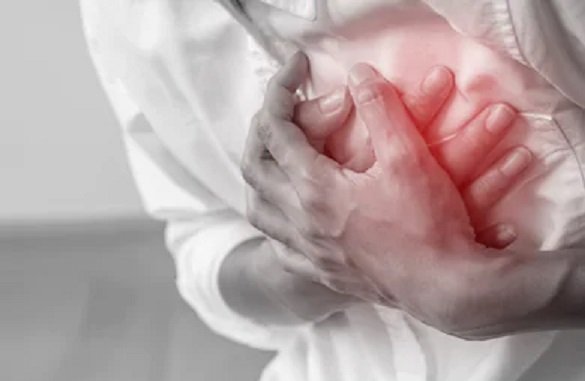Advanced imaging modalities aid better treatment for heart ailments
September 29, 2020 | Tuesday | Views
54.5 M people were affected by the CVDs in 2016 compared to 25.7 M in 1990
Image source: Shutterstock
In the last three decades, the number of people affected by cardiovascular diseases (CVDs) has doubled in India. As per a report by The Lancet, almost 54.5 million people were affected by the CVDs in 2016 compared to 25.7 million in 1990. Of them, coronary artery disease and strokes account for most fatalities. In India, 272 people / 1 lakh population (higher than the global average of 235 per 1 lakh) suffer from coronary artery disease. Coronary artery disease occurs when the arteries get blocked or get narrowed due to build-up of fat or calcium deposits called plaque.
This plaque initially blocks but later may completely occlude the artery over a period. The patient may feel mild to severe chest pain or pressure as the heart does not receive enough blood flow due to the blockage in the artery. This pain can spread to other parts of the body such as arms or jaw. If the arteries suddenly block completely, it can lead to a heart attack. Over the last three decades, as medical technology has evolved and managing coronary artery disease has become simpler now than ever, helping patients to return to a normal lifestyle right after the treatment.
Coronary angiography is the standard procedure used to diagnose and assess the disease burden. The course treatment is decided based on the information obtained from angiography. It is a minimally invasive way of diagnosis which entails inserting a thin tube (called catheter) through the groin or wrist to enter the opening of the coronary artery. During this procedure, the contrast dye is injected to visualize the site of the blocked artery precisely. However, this dye has some side effects, and, in some cases, it might cause serious problems in the kidneys.
With advancement in medical technology, we now have procedures such as Intravascular Ultrasound (IVUS) which uses less dye but still helps in visualising the blocked artery even more precisely and in a more complete manner, further even allowing even identification of early (not as yet occlusive) plaque and other complications which might be otherwise missed in plain coronary angiography.
How does IVUS work?
IVUS is an advanced imaging tool for coronary artery disease that used ultrasound waves (rather than X-rays used in standard angiography) and this enables the doctor to have a detailed look into the blood vessels of the heart much more clearly. The inside-out view of the blood vessel not only gives accurate information to the doctor about the amount and type of plaque deposit but also guides choice of appropriate stent-size required for treatment. Even after placing the stent, IVUS further guides the treating doctor; making sure that the stent has covered the disease area completely and if it is properly in contact with the vessel wall or not.
If the stent is not placed properly, it can lead to complications in the future with the need of another angioplasty. The system comes with a special tube called catheter which is inserted in the vessel (that needs to be assessed). The catheter has a probe on one side that captures images of the inner part of the vessel on a real-time basis. The technology works on the principle of ultrasound waves that bounce against tissue structures in the body. These lead to a pattern of echoes that are converted into a picture that gets transmitted to an external monitor.
These images provide the doctor, critical information required to make optimal treatment choices for the patient. Recently there have been advances in IVUS imaging with the introduction of newer generation catheters which provide even sharper and a very high-definition imaging of the arteries, which further improves the diagnosis and treatment plan.
Lifestyle hacks to manage coronary artery disease
When diagnosed with coronary artery disease the doctor will recommend medication to give the patient relief in chest discomfort, thin the blood, prevent blockage of arteries, and keep the rhythm of the heart as normal as possible. Coronary Artery Bypass Graft Surgery (CABG) and angioplasty with coronary artery stenting are surgical/interventional ways of treating the disease. However, besides medication and surgical options, lifestyle changes can help avoid further build-up of plaque and damage to blood vessels.
- Dietary changes: Diets that are high in cholesterol, saturated fat and refined carbohydrate increase your risk of coronary artery disease. Animal products, full-fat dairy products, coconut oils, among other foods contribute to the build-up of plaques. Healthy dietary choices like fruits, vegetables, and fish, particularly fish rich in omega-3 fatty acids such as salmon are advisable.
- Exercise regularly: Regular aerobic and yoga can help in increasing the physical abilities and quality of life. One should exercise for at least 30 minutes per day at least 5 times per week.
- Quit Smoking: Smoking damages the blood vessel, reduces the amount of oxygen in the blood, and forces the heart to beat faster. Not smoking improves blood flow by relaxing constricted blood vessels.
- One should manage chronic conditions, control blood glucose, cholesterol, and blood pressure level by taking the medicines prescribed and following a healthy lifestyle.
At a time when the world is battling with the COVID pandemic, it is imperative to stay connected with the doctor through telemedicine but in critical situations it may require one to rush to the nearest hospital. Remember, for cardiac ailments, time is the key. Therefore, early diagnosis and timely medical intervention is of utmost importance.
Dr Sundeep Mishra, Professor of Cardiology, AIIMS, New Delhi










